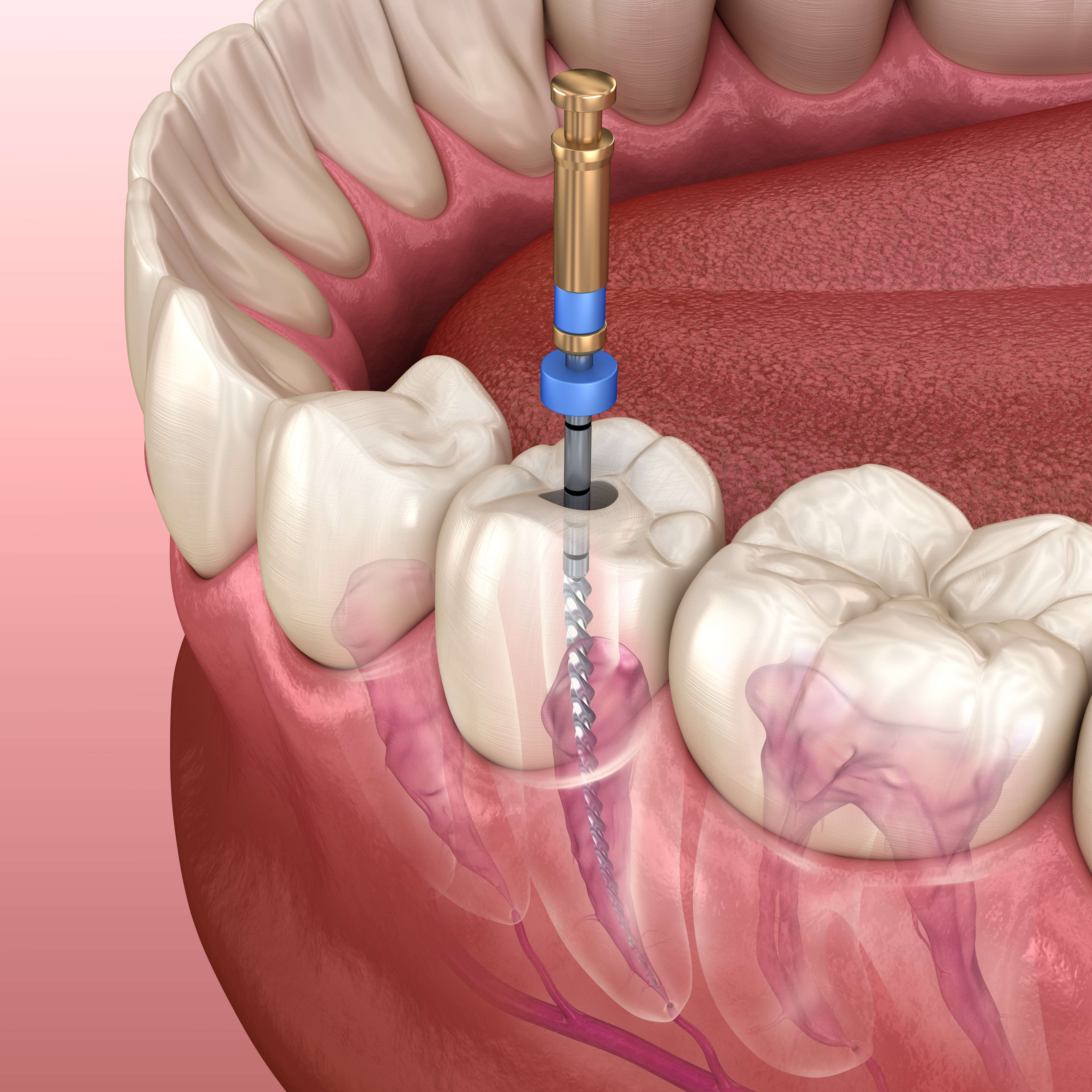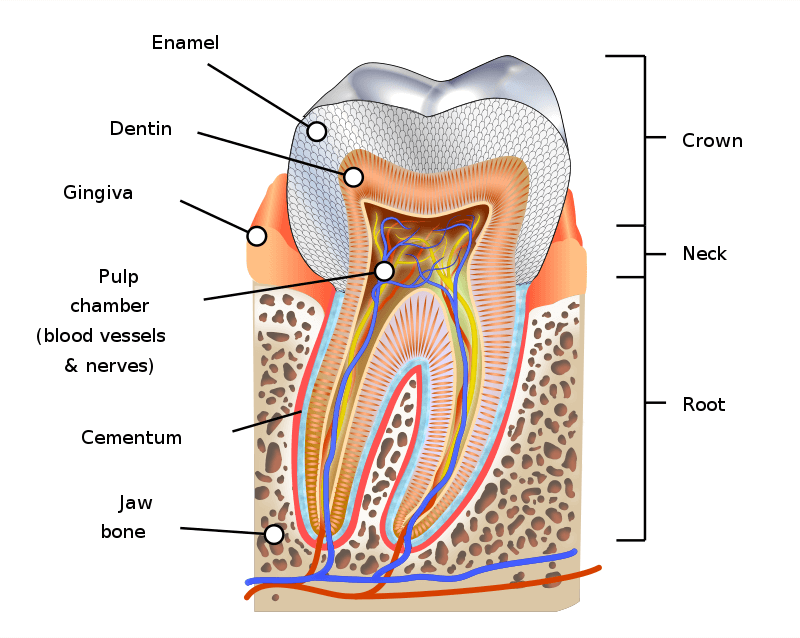Root Canal Treatment (endodontics) are dental procedures used to treat infection at the center of the tooth. The treatment can salvage a tooth that may otherwise have to be removed.
Commonly referred to as a ‘Root Canal’, it is the treatment sequence for the infected pulp of a tooth.
Endodontic Treatment involves the removal and the obturation (filling) of the decontaminated canals.


Infection at the center of a tooth is caused by bacteria that live in the mouth and invade the tooth.
Causes can consist of:
– tooth decay
– leaky fillings
– damage to teeth as a result of trauma
When your dentist recommends root canal treatment, it means that there is inflammation or infection in the tooth, and that there is already damage to the dental nerve.
Root canal treatment is required when dental x rays show that the pulp has been damaged by a bacterial infection.
The pulp will begin to die if infected by bacteria, allowing the bacteria to multiply and spread.
– pain / sensitivity when eating or drinking cold food and drink
– pain when chewing or biting
– a loose tooth
As the infection progresses, symptoms often disappear as the pulp dies.
Your tooth may appear to have healed, but the infection may in fact have spread through the root canal system.
Further symptoms may be experienced:
– pain when chewing or biting returning
– swelling of the gum around the affected tooth
– pus from the affected tooth
– facial swelling
– the tooth darkening
It is important to contact a dentist if you develop toothache. If the tooth is infected, the pulp cannot heal by itself, an irreversible process.
Leaving the infected tooth untreated may make it worse.
The root canal treatment may be rendered less effective if the infection within the tooth becomes established.
Antibiotics, medicines used to treat bacterial infections, are not effective in treating root canal infections.
Bacteria needs to be removed in order to treat the infection in the root canal.
This can be done by either:
+ removing the bacteria from the root canal system (root canal treatment)
+ removing the tooth (extraction)
Removing the tooth may be required depending on the progression of infection, and recommended as a last resort, as it is preferable to keep as many of your natural teeth as possible.
Once the bacteria is removed, the root canal is filled and the tooth sealed with a filling or crown.
In most cases the inflamed tissue around the tooth will heal naturally.
Before having root canal treatment, patients are usually administered local anaesthetic. This means the procedure should be painless and no more unpleasant than having a filling.
Root canal treatment has a high success rate. In around 9 out of 10 cases a tooth can survive for up to 10 years after root canal treatment.
1.Tenderness
You may feel some tenderness in the area of the tooth for a few days. This symptom usually responds well to over the counter medication and other prescription pain killers.
2.Mild soreness of the jaw
This problem is caused from the having your mouth open during the procedure. Warm compression on the jaw is a safe option to reduce soreness.
3.Pain & Swelling
Your may experience temporary discomfort from the temporary filling. Returning to your dentist to adjust occlusion can reduce discomfort.
Antibiotics may be prescribed to reduce swelling and infection.
4.Losing the temporary restoration
Ensure the temporary restoration is properly filled until the next visit, in order to prevent bacteria entering the cleaned root canal.
5.Be careful chewing
Avoid chewing with the tooth until it gets the final restoration.
6.Keep it clean